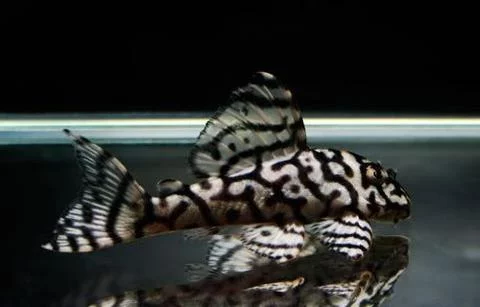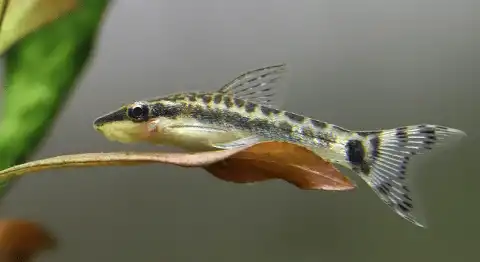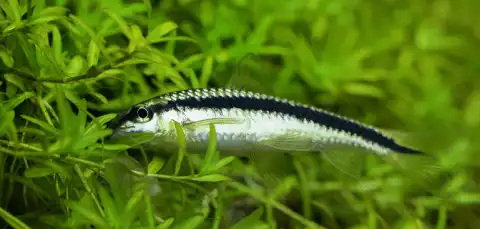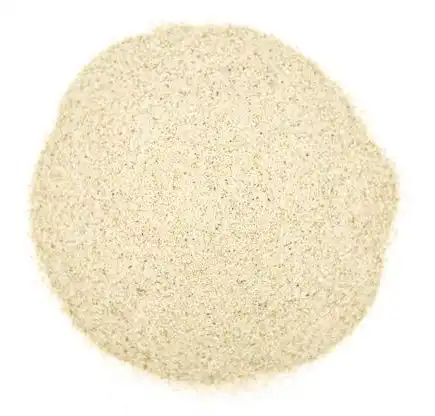Thank you for visiting! By the way… any links on this page that lead to products on Amazon and other stores/partners are affiliate links Aquarium Store Depot earns a commission if you make a purchase.
Just about any aquarium can benefit from a sucker fish. These awesome animals come in many awesome colors, shapes, and sizes, from the tiny otocinclus catfish to the common pleco, which can reach nearly two feet long!
In this article, I’ll cover a variety of great sucker fish so you can choose the best algae eating species for your aquarium. So let’s dive right in and get started!
The Top 10 Sucker Fish Types
It’s time to learn more about ten great sucker fish species that you can keep! Different types of sucker fish have different needs so I’ve included a list of the most important information about each species that you need to know. For you visual learners, check out the video below from our YouTube channel.
Pay attention to these facts and figures:
- Scientific Name
- Difficulty Level
- Adult Size
- Temperament
- Origin
- Minimum Tank Size
- Temperature
- Diet
- pH
- Difficulty to breed
- Planted tank suitability
Now let’s meet some sucker fish!
1. Otocinclus Catfish
A small algae-eating fish. Also great with freshwater shrimp.
- Scientific Name: Otocinclus spp.
- Difficulty Level: Easy
- Adult Size: 1.5-2 inches
- Temperament: Peaceful
- Origin: Peru, Colombia, Ecuador
- Minimum Tank Size: 10 gallons
- Temperature: 70-79°F
- Diet: Algae
- pH: 5.5-7.5
- Difficulty to breed: Moderate -Advanced
- Planted tank suitability: Yes
The otocinclus catfish is the best sucker fish for nano aquariums. That doesn’t mean this smaller species won’t enjoy a larger tank, however.
Otos are incredibly peaceful little fish that love to eat algae. You’ll usually find these entertaining little fish sucking on the glass, ornaments, or plants in the aquarium. They will also swim around in the midwater of the aquarium and will be much happier if kept in groups.
2. Chinese Algae Eater

- Scientific Name: Gyrinocheilus aymonieri
- Difficulty Level: Moderate
- Adult Size: 8-11 inches
- Temperament: Semi-aggressive
- Origin: Southeast Asia
- Minimum Tank Size: 75 gallons
- Temperature: 72-82°F
- Diet: Algae, dried foods, live & frozen foods, vegetables
- pH: 6-8
- Difficulty to breed: Advanced
- Planted tank suitability: Yes
The Chinese algae eater is a very common sucker fish in the hobby but one that should not be bought before doing careful research. These sucker fish can be pretty aggressive when they get older and have the scary habit of latching onto other fish and sucking on their slime coating.
3. Bristle Nose Pleco
The Bristlenose Pleco is a smaller Pleco that does a great job of eating algae. Peaceful and gets along with most fish
- Scientific Name: Ancistrus sp.
- Difficulty Level: Easy
- Adult Size: 5 inches
- Temperament: Peaceful/ semi-aggressive
- Origin: South America
- Minimum Tank Size: 20 gallons
- Temperature: 73-81°F
- Diet: Vegetables, spirulina, live/frozen food
- pH: 5.5-7.5
- Difficulty to breed: Easy
- Planted tank suitability: Yes
If you’re looking for a really strange and unique sucker fish for your aquarium, the bristlenose pleco could be a perfect choice! These fascinating fish are also known as the bushy nose pleco.
They are relatively small as far as plecos go and very peaceful in a community aquarium. A small flower pot to hide in and some driftwood to graze on will keep this fish happy in the home aquarium.
4. Siamese Algae Eater
A great algae-eating fish that is known for eating black beard algae. Grows up to 7 inches in length and requires a larger aquarium
- Scientific Name: Crossocheilus langei
- Difficulty Level: Easy
- Adult Size: 7 inches
- Temperament: Peaceful
- Origin: Southeast Asia
- Minimum Tank Size: 30 gallons
- Temperature: 68-79°F
- Diet: Algae, spirulina, vegetables
- pH: 6-7.5
- Difficulty to breed:
- Planted tank suitability: Yes
Siamese algae eaters are terrific little sucker fish that are famous for their habit of eating black brush algae (BBA). This makes them an awesome choice for planted tank enthusiasts who want a little help keeping their tank clean.
5. Zebra Pleco

- Scientific Name: Hypancistrus zebra
- Difficulty Level: Moderate
- Adult Size: 3.2 inches
- Temperament: Peaceful/semi-aggressive
- Origin: Brazil
- Minimum Tank Size: 15 gallons
- Temperature: 79-86°F
- Diet: Live/ frozen foods, sinking pellets
- pH: 6-7.5
- Difficulty to breed: Moderate
- Planted tank suitability: Yes
The zebra pleco is one of the best-looking sucker fish in the hobby. They stay pretty small too, making them a good choice for smaller fish tanks.
These eye-catching sucker fish are generally peaceful, but they can be a little aggressive towards other bottom-dwelling fish in the tank. Zebra plecos also need pretty hot water conditions to thrive, so keep that in mind when picking out tankmates.
6. Sailfin Plecostomus
- Scientific Name: Pterygoplichthys gibbiceps
- Difficulty Level: Easy
- Adult Size: 18 inches
- Temperament: Peaceful
- Origin: South America
- Minimum Tank Size: 125 gallons
- Temperature: 70-79°F
- Diet: Algae, sinking pellets, live/frozen food
- pH: 6.5-7.4
- Difficulty to breed: Advanced
- Planted tank suitability: Possible
The sailfin pleco (video source) is a large and beautiful sucker fish from South America. They get their name from their huge upright dorsal fin.
These peaceful fish are easy to keep and do very well in community setups. At over a foot in length, however, they need a large aquarium in order to thrive.
7. Trinidad Plecostomus

- Scientific Name: Hypostomus punctatus
- Difficulty Level: Easy
- Adult Size: 11 inches
- Temperament: Peaceful
- Origin: South America
- Minimum Tank Size: 70 gallons
- Temperature: 72-82°F
- Diet: Algae
- pH: 6-7.5
- Difficulty to breed: Advanced
- Planted tank suitability: Yes
The Trinidad pleco is a large species that is closely related to the common pleco or suckermouth catfish. It is a large algae eater that requires a large aquarium with plenty of swimming space. They are very peaceful and useful cleaners in large community tanks.
8. Spotted Sailfin Plecostomus
- Scientific Name: Pterygoplichthys joselimaianus
- Difficulty Level: Easy
- Adult Size: 12-16 inches
- Temperament: Peaceful
- Origin: Brazil
- Minimum Tank Size: 70 gallons
- Temperature: 74-79°F
- Diet: Algae, vegetables
- pH: 6.5-7.4
- Difficulty to breed: Advanced
- Planted tank suitability: Possible
The spotted sailfin pleco is also known as the marbled sailfin or the gold spot pleco. These sucker fish are usually very peaceful with the other fish in their tank but they tend to show some aggression towards their own species and other plecos. These suckermouth catfish get big, so be sure to provide them with enough space.
9. Peppermint Plecostomus
- Scientific Name: Parancistrus nudiventris
- Difficulty Level: Moderate
- Adult Size: 7 inches
- Temperament: Peaceful
- Origin: Brazil
- Minimum Tank Size: 50 gallons
- Temperature: 73-79°F
- Diet: Algae, sinking pellets, live/frozen foods
- pH: 6.5-7
- Difficulty to breed: Moderate
- Planted tank suitability: Yes
The peppermint pleco (video source) is another incredible armored suckermouth catfish of the Loricariidae family. These sucker fish are covered with whitish spots that create an amazing look almost like the starry night sky!
Peppermint plecos are peaceful fish that are perfect for community aquariums with some water movement to recreate their natural habitat.
10. Tiger Plecostomus
- Scientific Name: Hypancistrus sp.
- Difficulty Level: Easy
- Adult Size: 5 inches
- Temperament: Peaceful
- Origin: South America
- Minimum Tank Size: 40 gallons
- Temperature: 77-82°F
- Diet: Sinking pellets, live/frozen foods, Algae, vegetables
- pH: 5.8-7
- Difficulty to breed: Moderate
- Planted tank suitability: Yes
These sucker fish (video source) have beautiful markings, which is why they are named after striped big cats. Tiger plecos are usually black and white, although colorful golden morphs are available in the pet trade.
These fish are very peaceful in a community setup, but should not be kept with other plecos to avoid territorial behavior or possible hybridizing.
What Are They?
Sucker fish fall into a broad category of mostly bottom-dwelling freshwater fishes that often use their specialized ventral mouth to feed and attach themselves to the ground and structure around them. Many of them are specialized algae eaters, while others graze on driftwood or feed on small invertebrates.
Sucker fish belong to several groups including the family Loricariidae which includes the well-known suckermouth catfish. Other sucker fish species like the Siamese algae eater are cyprinids from the same family as well-known fish like goldfish and barbs.
Suckerfish live in a variety of natural habitat types from lakes and small freshwater streams to slower-moving channels of larger rivers. Many of them are nocturnal fish, but they adapt really well to aquarium life and can be active in dim lighting.
Tank Setup
Sucker fish are a pretty diverse group, so your tank setup will depend on which species you plan to keep. Nano species like otos can be kept in fish tanks as small as 10 gallons, but some of the bigger plecos require a much bigger tank
Let’s take a look at some general sucker fish aquarium setup tips.
Substrate & Decorations
Your choice of substrate is not particularly important unless you plan on growing a heavily planted tank. Aquarium sand or aquarium gravel will work just fine, and darker colors can help your fish feel more comfortable.
Natural sand is excellent for bottom feeder fish to forage around in.
Some suckerfish like to spend the day hiding so providing some caves in the form of large ornaments or even a simple terracotta flower pot can help them feel more at home. Driftwood is also very important for these fish so be sure to place a few pieces in your tank.
Lighting & Filtration
Some sucker fish like otocinclus and Siamese algae eaters are ideal for heavily planted tanks because they are great for keeping the plants and glass clean. These fish do just fine under high lighting in these setups. Plecos, on the other hand, tend to be nocturnal and will be more active under dimmer lighting.
Filtration is important in any aquarium, but particularly vital when keeping plecos which create rather a large amount of waste. Choose a filter that can process the total volume of your aquarium at least 5 times every hour.
Heating
Maintaining the proper temperature for your tropical freshwater fish is very important. Some species, like the bristlenose pleco, can often be kept in unheated aquariums. Most other species require relatively warm water, however.
Using a good quality heater will be important to keep the temperature in your aquarium stable and in the comfortable range for your sucker fish. Add a small thermometer to help you keep an eye on the temperature.
How To Care For
After setting up a great aquarium for your sucker fish, you’re going to need to learn how to care for them and keep them healthy. Fortunately, most sucker fish are peaceful and easy to care for. Read on to learn more!
Aquarium Maintenance
Maintaining optimal water quality should be the first priority of every fishkeeper. Running a good quality filter and keeping your fish in a big enough tank is very important, but you’ll also need to test your water regularly and get ‘hands on’ to keep your tank clean.
Before introducing any fish, pick up a water test kit and measure your water parameters to see if they are appropriate for the fish you want to keep. Your water chemistry will change over time, so you’ll need to do this regularly.
Perform a regular water change every week or two to keep your nitrate levels down. This is a great opportunity to suck up waste from your substrate and rinse out your filtration media. Don’t forget to use a water conditioner to treat your tap water before refilling the aquarium.
Feeding
The different sucker fish species have different diets, so make sure you know what kind of fish you have and the kind of food it needs. Most species are considered to be bottom feeders.
The following food sources are ideal for the omnivorous species of sucker fish:
- Shrimp pellets
- Sinking pellets
- Blanched veggies
- Live and frozen foods like brine shrimp and blood worms
Some sucker fish eat algae as their staple diet. These fish will feed on the algae that grow naturally in your aquarium. If you don’t have enough algae to keep them well-fed, the following food sources make great supplements:
- Algae wafers
- Spirulina tablets
- Blanched veggies
Algae wafers are a great way to directly feed your bottom feeding fish. They are especially effective for larger fish like plecos
Breeding
Some sucker fish are very easy to breed and you might even find fry swimming around in your tank without even trying. Other species, however, can be pretty challenging or even close to impossible to breed at home. This can be a post in itself. To make it easier for you, I provided this video by Purely Aquatic.
You will need to research the breeding habits of your specific species. For the best chance at success, set up a dedicated breeding tank and make sure your fish are kept healthy and in great condition.
Best Tank Mates
Most species of sucker fish are peaceful creatures that do great in community tanks. Plecos can be aggressive towards other members of their own species or other similar suckermouth fish that live on the bottom of the tank, however. Keeping just one of them in a community tank is usually the best bet.
The general rule is to choose non-aggressive tank mates that are not much larger than your suckerfish. That way you don’t have to worry about them being eaten by another fish. Ideal tank mates will also enjoy the same tank setup and water parameters.
Here are a few good tank mates to keep with peaceful sucker fish:
- Livebearers
- Corydoras catfish
- Tetras
- Danios
- Rasboras
- Peaceful barbs
Tankmates to Avoid
- Any aggressive fish
- Avoid keeping more than one pleco in the same tank
- Avoid keeping large, slow-moving fish with Chinese algae eaters
- Larger fish that could eat your sucker fish
Where To Buy
Most fish-keeping and pet stores sell a selection of sucker fish. Some of the rarer species will be much easier to find online, however. Always buy your fish from reputable breeders and stockists to be sure of the health and identity of the fish you buy.
FAQS
How big do they get?
The adult size of any sucker fish depends on its species. Some of the biggest types can grow over 20 inches long!
What do they eat?
Sucker fish eat a variety of different food sources. Most species are omnivorous and will feed on both animal and plant matter. Some sucker fish are specialized for eating algae, and that makes them great clean-up crew animals for home aquariums.
How long do they live?
Some sucker fish can live as long as 15 years, depending on their species. Small fish like otocinclus catfish will not live as long and have a lifespan of about 5 years or less.
Are plecos good fish for tanks?
Plecos are great freshwater fish for home aquariums. There are loads of different species that come in a huge variety of colors and patterns. Like all fish, it is important to carefully research their needs before adding them to your tank.
How many otocinclus should be kept together?
Otocinclus are social little fish that thrive if kept in groups. They will be happiest if kept in groups of 5 or more.
Final Thoughts
Sucker fish are some of the most interesting freshwater fish species in the aquarium hobby! These oddball fish can do a great job of keeping the tank clean while adding more interest to the bottom of the aquarium. If you ask me, just about every community aquarium should include sucker fish.
Do you keep sucker fish? Tell us about your favorite species in the comments below!
- About the Author
- Latest Posts
I’m thrilled that you found Aquarium Store Depot! Here you’ll find information on fish, aquariums, and all things aquatics related. I’m a hobbyist (being doing this since I was 11) and here to help other hobbyists thrive with their aquariums! I adhere to a high quality Editorial Process and Review products with real life field usage and practical analysis.










